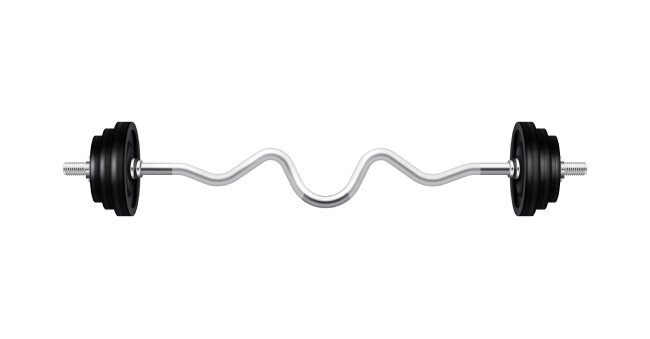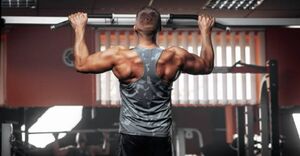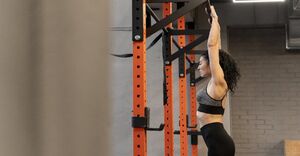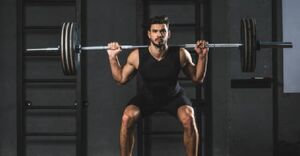
The Anatomy of a Perfect Curl: Understanding Curl Barbells Mechanics
If you’re looking to enhance your workout routine and target specific muscle groups, understanding the mechanics of curl barbells is essential.
This article will delve into the anatomy of a curl barbell and how its different parts work together, from the importance of proper form to the benefits of using curl barbells.
Discover the muscles used in a curl, the correct grip and range of motion, as well as common mistakes to avoid. Learn tips for improving your technique and maximizing your results with a curl barbell.
What Are Curl Barbells?
Curl Barbells are essential weightlifting equipment used in strength training exercises, specifically targeting the biceps and forearm muscles. Understanding the mechanics and proper use of curl barbells is crucial for maximizing the effectiveness of your workout routine and achieving your fitness goals.
These specialized barbells are designed with a unique curved shape that allows for a more natural grip and wrist position during curls, reducing strain and potential injuries.
Proper form and technique are paramount when using curl barbells to ensure that the targeted muscles are engaged effectively. It is important to maintain control throughout the movement, avoiding swinging or jerking motions to prevent unnecessary strain on the joints.
By focusing on controlled, slow movements with the curl barbell, you can build strength and endurance in the biceps and forearms while minimizing the risk of injury.
The Importance of Understanding Curl Barbells Mechanics
Understanding the mechanics of curl barbells is crucial for optimizing your strength training routine and achieving fitness success. Proper exercise form and knowledge of weightlifting techniques are essential for enhancing muscle activation and minimizing the risk of injury during your workout sessions.
Why Is Proper Form Important?
Proper form is essential when using curl barbells to ensure optimal muscle activation, prevent injuries, and promote effective muscle coordination. Maintaining correct posture and technique throughout your exercises is key to maximizing your workout effectiveness and ensuring long-term fitness progress.
When you execute curl barbell exercises with proper form, you engage the targeted muscles more efficiently, leading to better results. By focusing on maintaining the right posture, you not only reduce the risk of strains and sprains but also enhance the overall muscle activation during the movements. This attention to form not only aids in injury prevention but also nurtures better muscle coordination, helping you develop strength and stability across different muscle groups.
What Are the Benefits of Using Curl Barbells?
Using curl barbells offers a multitude of benefits, including muscle development, strength building, and enhanced resistance training. Incorporating curl barbells into your fitness routine can significantly contribute to your overall fitness progress and help you achieve your strength training goals.
The unique design of curl barbells allows for a more natural grip position, reducing strain on the wrists and elbows during exercises. This results in better form and reduced risk of injury, making them an ideal choice for individuals looking to safely target and develop their biceps and forearms.
The versatility of curl barbells also enables you to perform a wide range of exercises that target different muscle groups, providing a comprehensive full-body workout that can lead to significant strength gains and improved muscular endurance.
The Anatomy of a Curl Barbell
The anatomy of a curl barbell consists of specific components essential for executing various barbell exercises targeting the biceps and forearm muscles. Understanding the anatomy of a curl barbell is vital for mastering different curling variations and optimizing your exercise form and technique.
What Are the Different Parts of a Curl Barbell?
The different parts of a curl barbell include the bar shaft, sleeves, knurling, and grip area. Each component plays a crucial role in enhancing grip strength, exercise precision, and overall muscle activation during curling exercises.
The bar shaft serves as the central core of the curl barbell, providing stability and structure to the entire equipment. The sleeves, located at the ends of the bar, hold the weight plates securely in place during movement, ensuring a balanced distribution of weight. The knurling, with its textured pattern on the bar, aids in maintaining a secure grip, preventing slippage and allowing for better control over the barbell. The grip area, usually positioned at a specific width, offers comfort and support for the hands during curls, contributing to improved performance and reduced risk of injury.
How Do the Parts Work Together?
The parts of a curl barbell work together cohesively to facilitate proper muscle coordination, enhance exercise precision, and maximize muscle activation. Understanding how these components interact is essential for achieving optimal curling efficiency and performance.
For instance, the grip area of the curl barbell plays a crucial role in engaging the forearm muscles during the curling motion. Meanwhile, the weight distribution along the bar helps in stabilizing the movement and ensuring balanced muscle involvement. By maintaining a neutral wrist position and controlling the tempo of the lift, individuals can enhance not only the targeting of the biceps but also the overall efficiency of the exercise. This collective effort of the different barbell parts ultimately results in a more effective and focused curling workout.
The Mechanics of a Perfect Curl
Mastering the mechanics of a perfect curl is essential for optimizing your biceps workout and maximizing muscle fiber activation. By understanding the intricacies of curling technique and form, you can achieve significant strength gains and muscle development.
What Muscles Are Used in a Curl?
Curling exercises primarily target the biceps and forearm muscles, promoting muscle activation and controlled muscle contractions. Understanding the specific muscle groups involved is key to optimizing your arm workout and achieving desired muscle development.
When you perform curling exercises, your biceps, located on the front of your upper arm, are the primary muscles engaged. As you lift the weight towards your shoulders, the biceps contract, creating that classic ‘curl’ motion. Simultaneously, the muscles in your forearms, particularly the brachioradialis and brachialis, also come into play to stabilize and support the movement. By focusing on maintaining proper form and a controlled pace during curls, you effectively target these muscle groups and enhance muscle activation for better overall strength and development.
What Is the Proper Grip for a Curl Barbell?
Maintaining a proper grip on the curl barbell is essential for executing a smooth curling motion, optimizing muscle coordination, and ensuring exercise precision. The correct grip enhances your ability to control the barbell and engage the targeted muscles effectively.
With a secure grip, you’ll feel more stable during the curling exercise, allowing for better control over the weight distribution and movement. This control is crucial for maximizing the activation of specific muscle groups, such as the biceps and forearms. A proper grip helps in preventing injuries by reducing the likelihood of the barbell slipping or shifting unexpectedly. By paying attention to your grip strength and positioning, you can refine your curling technique and achieve greater results in terms of muscle development and overall fitness progress.
What Is the Correct Range of Motion?
Maintaining the correct range of motion during a curl involves controlled elbow flexion to optimize muscle activation and engage specific muscle fibers effectively. Understanding and executing the proper range of motion is crucial for maximizing your biceps workout results.
By ensuring that your elbows remain stationary throughout the movement, you can target the biceps more efficiently. The range of motion in curling exercises not only dictates muscle engagement but also plays a significant role in preventing injury. Proper alignment and form are key factors that determine the effectiveness of each repetition. Focusing on the full extension and contraction of the biceps helps in promoting muscle growth and strength. Consistency in maintaining the right range of motion leads to improved muscle endurance and overall performance in your workout routine.
How Should the Barbell Be Positioned?
Positioning the barbell correctly in different curling variations is crucial for targeting specific muscle groups, enhancing muscle endurance, and maintaining exercise precision. Understanding the optimal barbell position for each curling variation is key to achieving effective muscle activation and performance improvement.
For instance, in a standing bicep curl, holding the barbell with an underhand grip and positioning it slightly in front of the body helps isolate the biceps brachii muscles. On the other hand, for hammer curls, keeping the elbows close to the body and the barbell in a neutral grip position activates the brachialis and brachioradialis muscles. By mastering the subtleties of barbell positioning, individuals can not only improve their muscle isolation but also prevent potential injury risks and promote balanced muscle development.
Common Mistakes and How to Avoid Them
Avoiding common mistakes when using curl barbells is essential for ensuring exercise safety, promoting proper muscle coordination, and optimizing resistance mechanics. Recognizing and correcting these mistakes can significantly enhance your curling efficiency and overall workout effectiveness.
What Are the Most Common Mistakes When Using a Curl Barbell?
Some common mistakes when using a curl barbell include improper form, lifting excessive weight, and neglecting warm-up exercises. These errors can lead to reduced muscle activation, compromised exercise safety, and hindered progress in resistance training.
Improper form during curl barbell exercises can strain the wrists and compromise the targeted muscle engagement. It is crucial to maintain a stable posture with controlled movements to maximize the effectiveness of the workout. Lifting weights beyond your capacity not only increases the risk of injury but also diminishes the quality of each repetition. Prioritizing a proper warm-up routine, such as dynamic stretching and light cardio, is essential to prepare the muscles and joints for the intensity of the workout session.
How Can These Mistakes Be Corrected?
Correcting mistakes when using a curl barbell involves focusing on improving exercise form, gradually increasing weights, and incorporating proper warm-up routines. By addressing these errors, you can enhance muscle coordination, achieve strength gains, and prevent workout-related injuries.
One common mistake to avoid is using momentum instead of controlled movements during curls, which can lead to reduced effectiveness and potential muscle strain. It’s crucial to maintain a stable stance, engage the core muscles, and ensure full range of motion for each repetition.
When progressing in weights, ensure a gradual increase to prevent overwhelming your muscles. Including a dynamic warm-up with stretches specific to the muscles involved in curl barbell exercises can help prepare the body for the workout and reduce the risk of injuries.
Tips for Improving Your Curl Barbells Technique
Enhancing your curl barbell technique requires a focus on exercise precision, fitness mastery, and maximizing muscle activation. Implementing advanced techniques and strategies can help you optimize your curling performance, achieve fitness success, and attain your strength training goals.
How Can You Maximize Your Results with a Curl Barbell?
To optimize your results with a curl barbell, focus on refining your curling technique, prioritizing muscle development, and incorporating effective fitness training strategies. By maximizing your efforts and commitment to your workout regimen, you can accelerate your progress and achieve your fitness goals.
Ensuring proper form is key in maximizing the benefits of using a curl barbell. Pay attention to your grip, keeping it firm but not overly tight, to engage the targeted muscles effectively. Vary your grip width to target different areas of the biceps for balanced development. When performing each curl, control the movement both on the way up and down, avoiding swinging or using momentum. Gradually increase the weight as your strength improves to continuously challenge your muscles and promote growth.
What Are Some Advanced Techniques for Using a Curl Barbell?
Incorporating advanced techniques when using a curl barbell can involve adjusting resistance levels, focusing on muscle endurance, and enhancing your overall workout routine. Experimenting with progressive methods can challenge your muscles, boost performance, and elevate your strength and fitness gains.
One effective way to enhance muscle endurance during a curl barbell workout is to perform high-repetition sets with proper form. By increasing the number of repetitions while maintaining good technique, you can improve your muscles’ ability to withstand fatigue.
Incorporating drop sets where you decrease the weight after reaching muscle failure can help in pushing past plateaus and stimulating further muscle growth. It’s important to introduce variety in your routine, alternating between different grip widths, tempos, and angles to target various muscle groups and keep your body adapting to new challenges.




No Comments